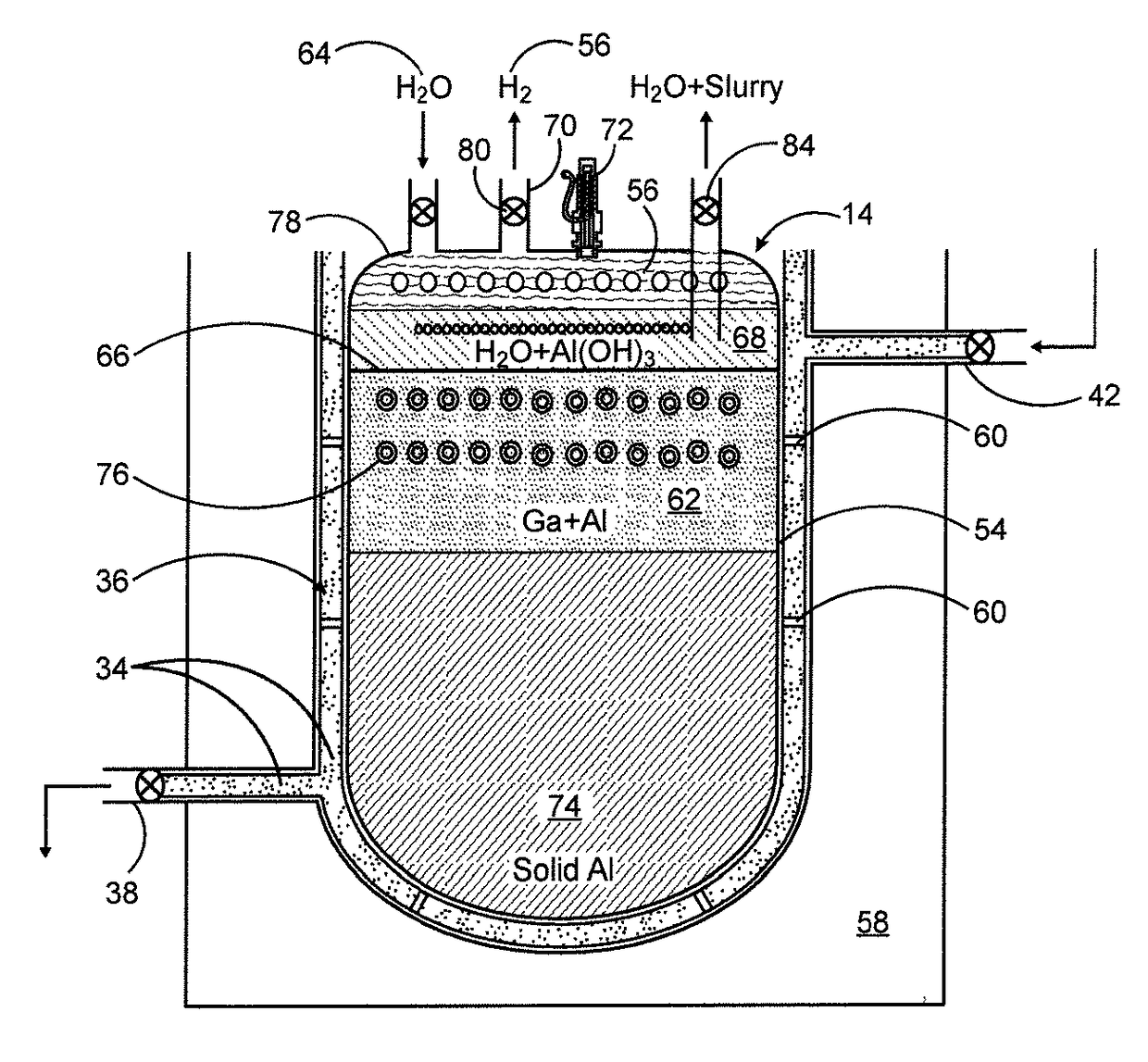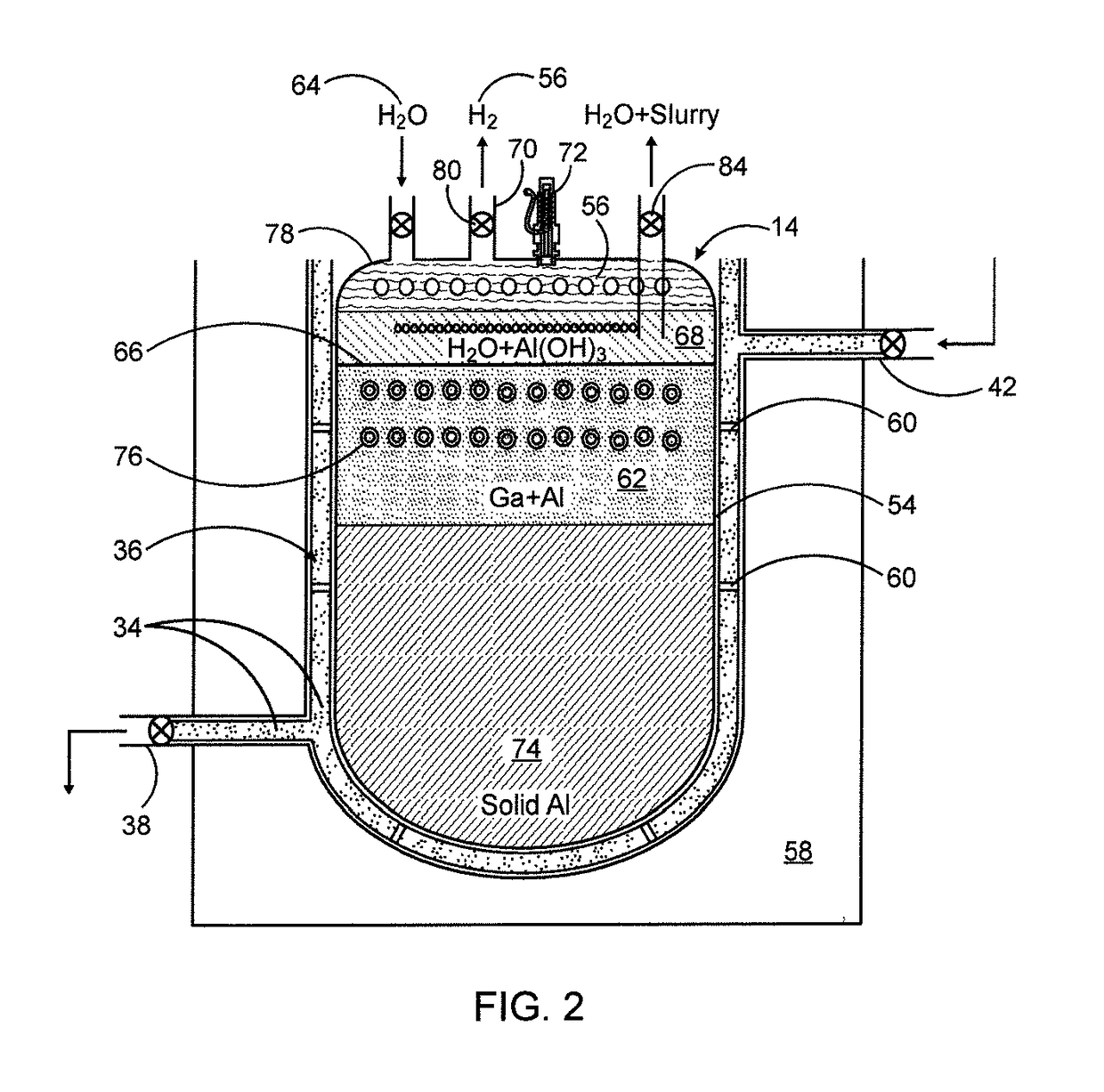Selectively locatable power generation system employing a water splitting process
a power generation system and selective locatable technology, applied in the field of alternative energy, can solve the problems of low level of production from a bank of solar panels with regard to providing all of the energy, high cost of energy storage, and low efficiency of solar power systems
- Summary
- Abstract
- Description
- Claims
- Application Information
AI Technical Summary
Benefits of technology
Problems solved by technology
Method used
Image
Examples
example
[0038]Over a four-week cycle, a reactor 14 producing 2 Kg hydrogen per cycle will execute two cycles per week, to fuel normal driving needs (300-400 miles per week) of an FCV 20. Therefore the reactor 14 should be charged every month to execute 8 reaction cycles. To achieve these ends, the reactor 14 is charged with a 200 Kg quantity of molten Ga 62 and a 170 Kg quantity of aluminum feedstock 74. The reactor 14 has a removable top 78, allowing it to be charged with the solid aluminum feedstock 74 on site. Alternatively, the reactor 14 could be received on-site by delivery, every four weeks, fully charged, and inserted into the insulation jacket 58. The reactor 14 shown in FIG. 2 is removable by depressing detents 60 and removing the reactor 14 from the insulation jacket 58. The operation of the reactor is further explained as follows:[0039]1. The water-splitting process begins by initially injecting 40 Kg of water reagent 64, in metered aliquots, into the reactor 14, via a hydraulic...
PUM
| Property | Measurement | Unit |
|---|---|---|
| temperature | aaaaa | aaaaa |
| pressure | aaaaa | aaaaa |
| temperature | aaaaa | aaaaa |
Abstract
Description
Claims
Application Information
 Login to View More
Login to View More - R&D
- Intellectual Property
- Life Sciences
- Materials
- Tech Scout
- Unparalleled Data Quality
- Higher Quality Content
- 60% Fewer Hallucinations
Browse by: Latest US Patents, China's latest patents, Technical Efficacy Thesaurus, Application Domain, Technology Topic, Popular Technical Reports.
© 2025 PatSnap. All rights reserved.Legal|Privacy policy|Modern Slavery Act Transparency Statement|Sitemap|About US| Contact US: help@patsnap.com



